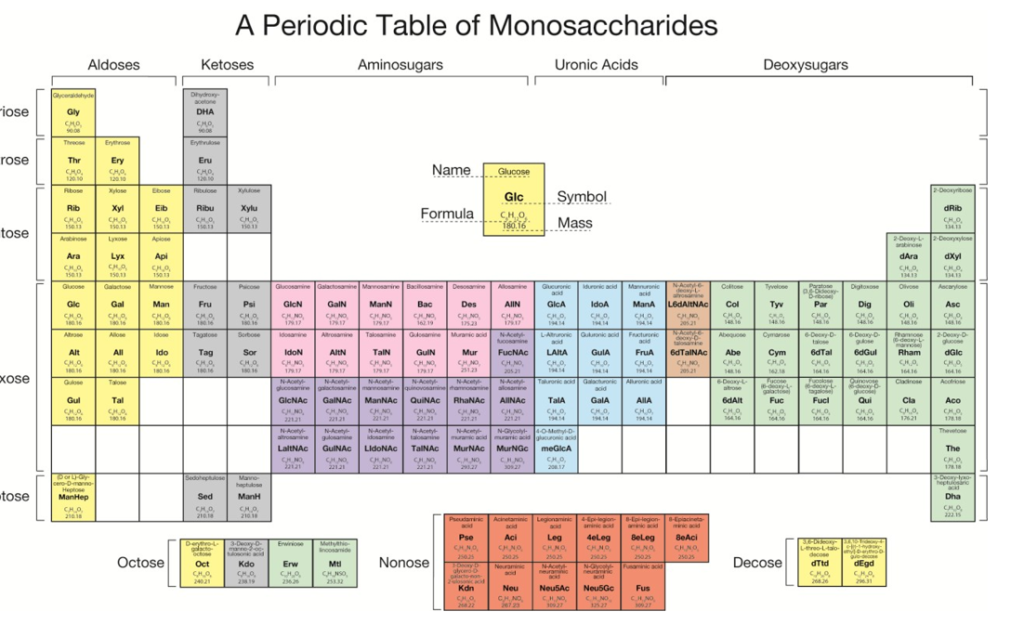It is important to recognize the great diversity of monosaccharides commonly encountered in animals, plants, and microbes, as well as to organize them in a visually interesting style that also emphasizes their similarities and relatedness. This article discusses the nature of building blocks, monosaccharides, and monosaccharide derivatives – terms commonly used in discussing ‘glycomolecules’ found in nature. To aid in awareness of monosaccharide diversity here is presented a Periodic Table of Monosaccharides. The rationale is given for the construction of the Table and the selection of 104 monosaccharides, which is largely based on those presented in the KEGG and SNFG websites of monosaccharides and includes room to enlarge as new discoveries are made. The Table should have educational value and is intended to capture the attention and foster the imagination of those unfamiliar with glycosciences and encourage researchers to delve deeper into this fascinating area.





